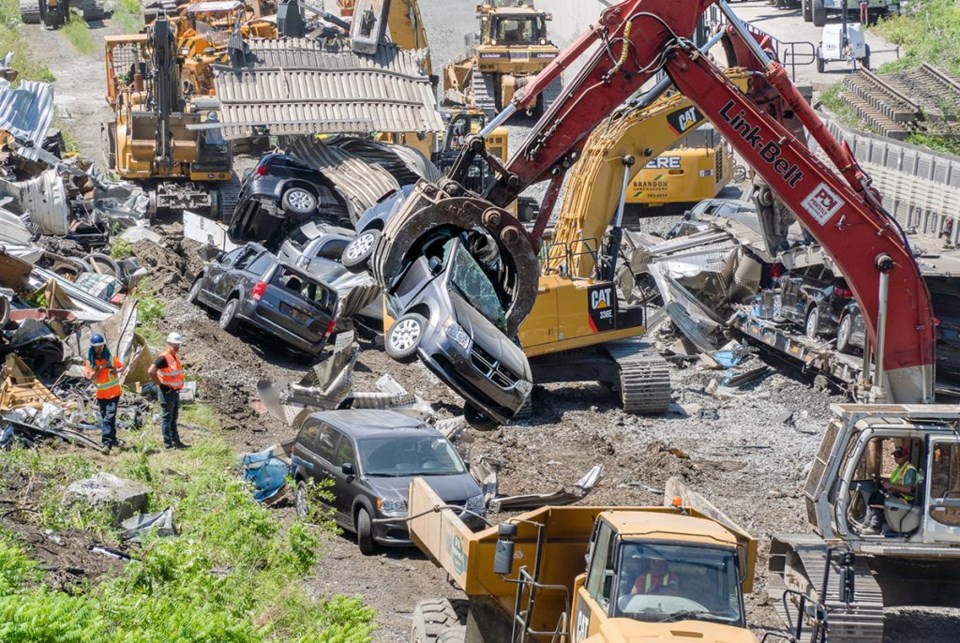Troy Shantz
The cause of a 2019 train derailment in the St. Clair River Tunnel has been traced to a single railcar, investigators say.
The Canadian National Railway freight train was westbound in the tunnel on June 28 when one end of Car 53 collapsed, starting a chain reaction that derailed a total of 45 cars and a mid-train engine at 4:02 a.m., the Transportation Safety Board of Canada report concluded last week.
The train, which had 140 cars and was 2.9 kilometres (1.8 miles) long, had a three-person operating crew: locomotive engineer, conductor, and brakeman.
The train was doing 71 kilometres per hour (44 mph) when the derailment occurred, causing automatic brakes to engage, the report said.
An examination of the locomotive’s event recorder data determined the derailment happened in Canada.
The two engines and front third of the train separated, leaving a line of toppled cars straddling the Canada-U.S. border. The head-end came to a halt outside the tunnel in Port Huron, Michigan.
No one was injured, but one dangerous goods car was breached, releasing about 12,000 gallons (45,425 litres) of sulphuric acid inside the tunnel.
Local officials responded and a reconnaissance team was sent inside to investigate, crews said at the scene. The Sarnia fire department’s hazardous materials unit was involved.
Workers spent more than a week removing damaged rail cars and their cargo from inside the tunnel, including dozens of new automobiles destined for sale in the U.S.
The first derailed car, Car 53, is known as a “bathtub gondola,” a type once commonly used to deliver coal to power plants.
After leaving the track, it skewed diagonally and tipped over to the south side of the tunnel. Investigators found extensive damage on the car and its broken knuckle - the coupler that links rail cars together. The broken knuckle had no visible pre-existing defects.
The investigation is still ongoing. Board earlier issued advisories for all railways to identify, inspect, and repair similar gondola cars.
